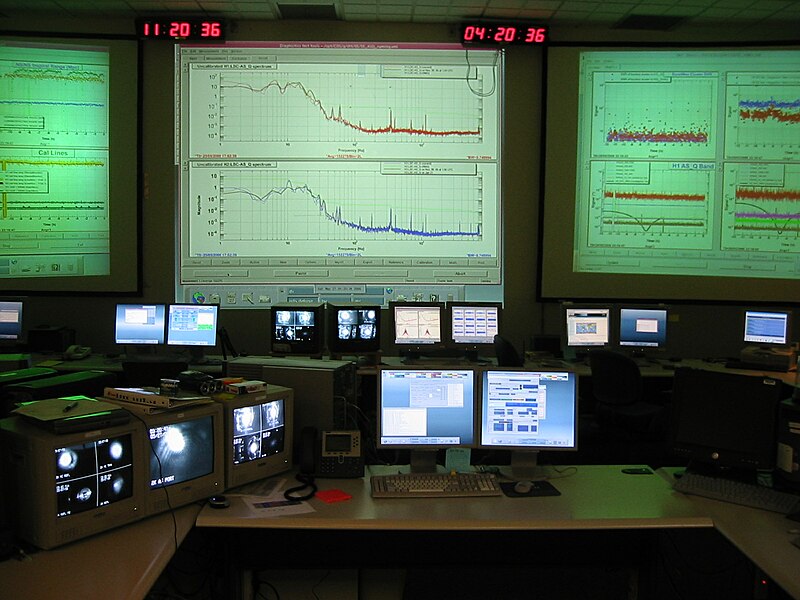
|
For decades, physicists have been struggling to reconcile two very different pictures of the world: the classical view, which sees the world as being made up of discrete, well-defined objects; and the quantum view, in which things don’t have sharp boundaries but are blurred in space and time. Now, Professor Freeman Dyson of the Institute for Advanced Study (IAS) in Princeton, New Jersey, suggests that the attempt to reconcile the two pictures within a unified theory may be a futile quest. Both pictures of reality, he believes, are true within their own respective domains. There’s an upside to this duality: “The classical universe and the quantum universe could then live together in peaceful coexistence,” writes Dyson, in a short essay entitled, “How Incompatible Worldviews Can Coexist” in the IAS newsletter for spring 2013. Chemist Ashutosh Jogalekar has also written an interesting article about Dyson’s proposal over on his blog, The Curious Wavefunction.
The gist of Professor Dyson’s case is that if there is a unified theory, then there must be an elementary particle that mediates the force of gravitation, within the framework of this theory. Physicists refer to this hypothetical elementary particle as a graviton. Dyson has proposed a daring hypothesis: that single gravitons may be unobservable by any conceivable apparatus. He doesn’t claim to have proof for his hypothesis, but he does claim to have evidence. The evidence relates to a gravitational wave detector called a LIGO (Laser Interferometer Gravitational-Wave Observatory), which is now operating in Louisiana and in Washington State. The picture above, courtesy of Wikipedia, is of the LIGO Control Room at Hanford Nuclear Reservation, Washington. Dyson explains why he believes that this kind of apparatus could never, even in principle, observe a graviton:
The way LIGO works is to measure very accurately the distance between two mirrors by bouncing light from one to the other. When a gravitational wave comes by, the distance between the two mirrors will change very slightly. Because of ambient and instrumental noise, the actual LIGO detectors can only detect waves far stronger than a single graviton. But even in a totally quiet universe, I can answer the question, whether an ideal LIGO detector could detect a single graviton. The answer is no. In a quiet universe, the limit to the accuracy of measurement of distance is set by the quantum uncertainties in the positions of the mirrors. To make the quantum uncertainties small, the mirrors must be heavy. A simple calculation, based on the known laws of gravitation and quantum mechanics, leads to a striking result. To detect a single graviton with a LIGO apparatus, the mirrors must be exactly so heavy that they will attract each other with irresistible force and collapse into a black hole. In other words, nature herself forbids us to observe a single graviton with this kind of apparatus.
In his blog article, chemist Ashutosh Jogalekar includes an update on the story:
When I met Dyson last year he told me that he had tried hard to find a flaw in the calculation, to no success. If true this limitation goes much beyond detecting discrete gravitons. It could mean that the world of gravity and the world of subatomic particles will forever stay separate from each other, being disallowed from sampling each other’s domains by a fundamental physical barrier.
In a 2012 physics paper entitled, Is a Graviton Detectable?, Dyson also looked at a different class of gravitational wave detectors, which attempt to observe the interactions of gravitons with individual atoms, and concluded that these too could not possibly detect gravitons “in the environment provided by the real universe.” Finally, he examined a third class of detectors, which attempt to observe coherent transitions between graviton and photon states induced by an extended classical magnetic field. For this class of detectors, he was unable to arrive at any definite conclusion. As he put it: “There is much work still to do.”
Of course, the fact that gravitons are undetectable doesn’t make them unreal, and Professor Dyson acknowledges as much in his 2012 paper, which concludes that we cannot rule out either of the following hypotheses, at the present time:
One hypothesis is that gravity is a quantum field and gravitons exist. A second hypothesis is that the gravitational field is a statistical concept like entropy or temperature, only defined for gravitational effects of matter in bulk and not for effects of individual elementary particles. If the second hypothesis is true, then the gravitational field is not a local field like the electromagnetic field. The second hypothesis implies that the gravitational field at a point in space-time does not exist, either as a classical or as a quantum field…
…If a graviton detector is in principle impossible, then both hypotheses remain open. Even if their existence is not experimentally testable, gravitons may still exist.
The conclusion of our analysis is that we are still a long way from settling the question whether gravitons exist. But the question whether gravitons are in principle detectable is also interesting and may be easier to decide.
If Professor Dyson is correct, then the quest for a unified theory of physics is a fundamentally misguided one, and quantum gravity would then be a gigantic waste of time. If this is the case, then physicists would be better advised to direct their intellectual energy at more sensible research goals.
Has Dyson liberated physics from a decades-long fool’s errand? What do readers think?